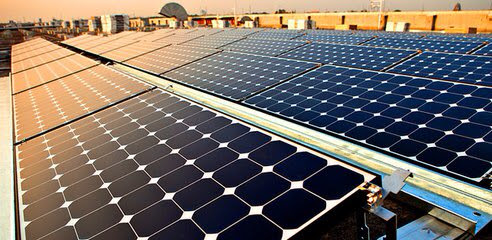In the race to
transition from fossil fuels to renewable sources of energy and avoid runaway climate change, wind has opened a wide lead on both solar and geothermal energy.
Solar panels, with a capacity totaling 70,000 megawatts, and geothermal power plants, with a capacity of some 11,000 megawatts, are generating electricity around the world. The total capacity for the world’s wind farms, now generating power in about 80 countries, is near 240,000 megawatts. China and the United States are in the lead.
Over the past decade, world wind electric generating capacity grew at nearly 30 percent per year, its increase driven by its many attractive features and by public policies supporting its expansion. Wind is abundant, carbon-free and nondepletable. It uses no water, no fuel, and little land. Wind is also locally available, scales up easily, and can be brought online quickly. No other energy source can match this combination of features.
One reason wind power is so popular is that it has a small footprint. Although a wind farm can cover many square miles, turbines occupy only 1 percent of that area. Compared with other renewable sources of energy, wind energy yield per acre is off the charts. For example, a farmer in northern Iowa could plant an acre in corn that yields enough grain to produce roughly $1,000 worth of fuel-grade ethanol per year, or he could use that same acre to site a turbine producing $300,000 worth of electricity each year.
Because turbines take up only 1 percent of the land covered by a wind farm, ranchers and farmers can, in effect, double-crop their land, simultaneously harvesting electricity while producing cattle, wheat or corn. With no investment on their part, farmers and ranchers can receive $3,000 to $10,000 a year in royalties for each wind turbine on their land. For thousands of ranchers on the U.S. Great Plains, wind royalties will one day dwarf their earnings from cattle sales.
Wind is also abundant. In the United States, three wind-rich states—North Dakota, Kansas, and Texas—have enough harnessable wind energy to easily satisfy national electricity needs. Another attraction of wind energy is that it is not depletable. The amount of wind energy used today has no effect on the amount available tomorrow.
Unlike coal, gas, and nuclear power plants, wind farms do not require water for cooling. As wind backs out coal and natural gas in power generation, water will be freed up for irrigation and other needs.
Perhaps wind’s strongest attraction is that there is no fuel cost. After the wind farm is completed, the electricity flows with no monthly fuel bill. And while it may take a decade to build a nuclear power plant, the construction time for the typical wind farm is one year.
Future wind complexes in the Great Plains, in the North Sea, off the coast of China or the eastern coast of the United States may have generating capacity measured in the tens of thousands of megawatts. Planning and investment in wind projects is occurring on a scale not previously seen in the traditional energy sector.
One of the obvious downsides of wind is its variability. But as wind farms multiply, this becomes less of an issue. Because no two farms have identical wind profiles, each farm added to a grid reduces variability. A Stanford University research team has pointed out that with thousands of wind farms and a national grid in a country such as the United States, wind becomes a remarkably stable source of electricity.
In more densely populated areas, there is often local opposition to wind power— the NIMBY (“not in my backyard”) response. But in the vast ranching and farming regions of the United States, wind is immensely popular for economic reasons. For ranchers in the Great Plains, farmers in the Midwest or dairy farmers in upstate New York, there is a PIMBY (“put it in my backyard”) response.
Farmers and ranchers welcome the additional income from having wind turbines on their land. Rural communities compete for wind farm investments and the additional tax revenue to support their schools and roads.
One of the keys to developing wind resources is building the transmission lines to link wind-rich regions with population centers. Perhaps the most exciting grid project under development is the so-called Tres Amigas electricity hub, a grid interconnection center to be built in eastern New Mexico. It will link the three U.S. electricity grids — the Eastern, Western, and Texas grids. Tres Amigas is a landmark in the evolution of the new energy economy. With high-voltage lines linking the three grids where they are close to each other, electricity can be moved from one part of the United States to another as conditions warrant. By matching surpluses with deficits over a broader area, electricity wastage and consumer rates can both be reduced. Other long distance transmission lines are under construction or in the planning stages.
More


















